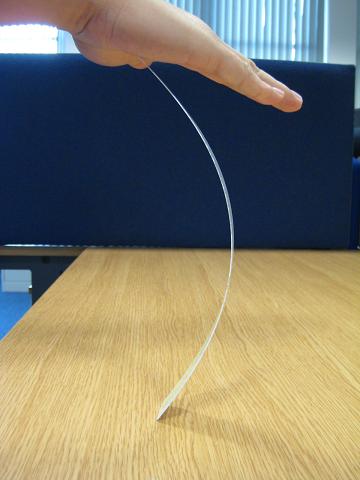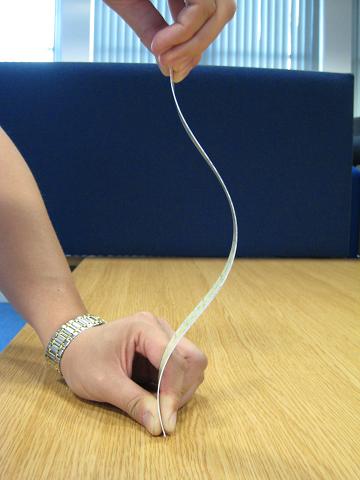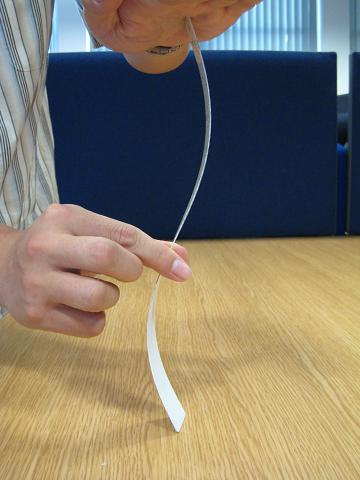Buckling shapes of plastic columns
These models demonstrate the phenomenon of buckling and the buckling shapes of a column with different boundary conditions. Users can feel the magnitudes of the buckling forces of the plastic columns.



Fig. 10-5: Buckling shapes and boundary conditions of a plastic ruler
Column buckling behaviour can be demonstrated using slender members such as a thin plastic ruler.
- Put one end of the ruler on the surface of a table and the other end in the palm of one’s hand. Press axially on the top end of the ruler and gradually increase the compression force. The straight ruler will suddenly deflect laterally as shown in Fig. 10-5a. The deformation becomes larger with further application of the compressive force. This simulates the buckling of a column with two pinned ends.
- Now hold the two ends of the ruler tightly to prevent any rotational and lateral movements of the two ends of the ruler. Then gradually press axially on the ruler using the fingers until the ruler deforms sideways as shown in Fig. 10-5b. This demonstrates a different buckling shape for a column with two ends fixed. One can clearly feel that a larger force is needed in this demonstration than in the previous demonstration.
- If one intermediate lateral support is provided, so that the ruler cannot move sideways at this point, a larger compressive force will be required to make the ruler buckle in the shape shown in Fig. 10-5c.
